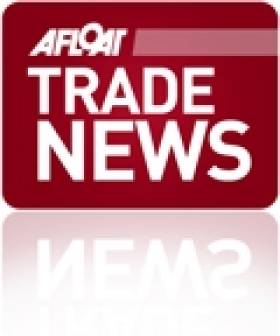Displaying items by tag: Superyacht Irish Sea
Brand New 'Superyacht' Transits Irish Sea Bound for Gibraltar and Med-Charter Cruising
#SuperYachtIrishSea-Brand new superyacht, Astra, a 55m (180ft) newbuild from Dutch shipyard Amels, made a mid-way passage through the Irish Sea last week and which saw the 672 tons luxury vessel head for Gibraltar, writes Jehan Ashmore.
The ultra-sleek lines of the Caymen Islands flagged vessel are styled by Tim Heywood Design and her interiors are by Laura Sessa Romboli where her 10 guests will be pampered throughout and looked after by a crew of 7 and a master skipper.
Superyacht features are an owner's master suite fitted with a folding balcony, as for guest accommodation for 8, there are four staterooms, including 2 double cabins and 2 twin cabins.
Her on board ambiance of timeless styling, beautiful furnishings and sumptuous seating features throughout are created to enhance elegance and a comfortable atmosphere.
Astra has an impressive range of day-time and evening leisure facilities and entertainment amenities making her ideal for the charter yacht market for family and hosting social occasions. This is where her Main Deck Saloon will make use for such gatherings as from here there are two balconies providing easy access to the open-sea air.
While the enlarged Sun Deck – at 25 metres long has a luxurious space of 155sq metres – and as claimed by Yacht Charter Fleet's website (click here), she could make a strong case for being the largest sun deck you'll find on any 55-metre. In addition to the customary access of vessel tender to reach secluded places.
Astra is a semi-custom Amels 180 displacement yacht launched this year. Amenities include a pair of jacuzzi's, a beach club, BBQ, swimming plat-form, steam-room and of course air conditioning throughout.
She was built in Vlissengen, the shipyard is part of the Damen Group which also built the ILV Granuaile for the Commissioners of Irish Lights in Romania.
Within the 180 design range there is also a 'Touch & Go' helipad which accepts a 2,000kg take-off weight. Noting that those wanting to visit the Amels Dutch shipyard can also visit by helicopter!.. as there is an approved onsite heliport.
She has a range of 4,500 nautical miles. To get about her Mediterranean cruising grounds (see sea areas listed below) this will not be an issue, as she has a cruising speed of 13 knots, though this can be boosted to 15.5 knots, if not up to 16 knots top!
Should sea-states not be condusive to hosting a cocktail event, this need not be a concern for those privately cruising on Astra along the azur seas off Monte Carlo or off Croatia on the Adriatic. As Astra has an 'at anchor stabilisers' system which works at zero speed, increasing on-board comfort at anchor and even during rough waters.
You may not suffer sea-sickness, but if you are still feeling home-sick, there is use of a Wi-Fi. Should you also be required to keep track of your day-to-day business affairs, communicating with the outside world is still an option through this form of 'connectivity'.
Astra's charter cruising grounds of the central Med (from west to east) are Ibiza, Corsisa, Sardinia, French Riviera notably St. Tropez, Cannes, Monaco, the Italian Riviera and as previously mentioned Croatia.
All of this commands an extremely deep-pocket should this ever contemplate a charter. So what kind of euros or buck will this set you back?
For the summer season, charter rates start from €275,000 ($377,799) a week plus expenses!





























































